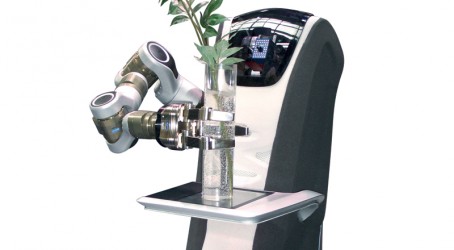The market for domestic robots is growing hugely, according to industry experts. But unless companies learn from past mistakes they may miss out on cashing in on the trend, as technology developed in Europe is commercialised elsewhere.
Barry Goeree, director and innovation lead of robotics at Philips Consumer Lifestyle in the Netherlands, said that the global market for domestic robots is doubling every year. Despite Europe having the research and development and the big brands, he called for government support to bolster the industry.
Goeree said: “The US and Asia are commercialising faster. With research and development for a new product costing anything between €10 million and €50 million, this is a high-risk game, so we need government support if we are to successfully bridge the gap between R&D and consumer sales.”
Much of this research-to-market gap is down to industry attitudes towards entrepreneurialism and the robotics market in Europe, according to Geoff Pegman, managing director of UK-based RURobot. “There just isn’t the attitude that robotics research leads to the opportunity to set up companies in Europe as there is in the US,” he said. In addition, US companies generally believed that it was beneficial to be the market leader in a technology, but European companies often didn’t want to be the first, he added.
The robotics market is mainly business-to-business, and often those buying are reluctant to shoulder the financial risk of getting involved, said Pegman. “But also, because robotics is not a proven technology, they worry whether it will have an adverse effect on business,” he added.
Another factor behind the lack of commercial success is that central support mechanisms are insufficient. The robotics industries of Korea, Japan and China have more government support than those in Europe. But Pegman does not believe that all future support should be financial. “Half of this is market creation,” he said. “If governments took the attitude that they wanted to positively promote robotics, or be a proactive buyer or developer, it would help the growth of an industry that is going to be beneficial to the whole of Europe.”
He added: “This is going to be big. If we are not in it, Europe is going to lose out. There is a perception that robotics isn’t done in Europe, and that is one thing we have to get over.”
Robotic milking is one area where Europe is seeing commercial success. But other areas where Europe has good capabilities, such as medical robotics, are dominated by the US.
If Europe is to tap into the vast potential market for service robots, production costs have to fall and niches in the market need to be explored. Some European manufacturers already have their eyes on the mass market and future trends.
One such manufacturer is Fraunhofer IPA, the producer of the Care-O-bot – a robot designed to help provide care for the swelling older population.
Martin Haegele, head of robot systems at the German company, said: “With every component hand-made, the robot costs up to €250,000, though we are aiming to eventually bring that down to €10,000 through industrial production.”
Perseverance may also be necessary to reap commercial success from robotics, according to Per Ljunggren, CEO of Intelligent Machines, Sweden. He was the brains behind the first commercially available robotic vacuum cleaner, the Electrolux Trilobite.
However, being first on the market did not guarantee success, said Ljunggren. “We met all our product objectives, except we didn’t become the market leader. With hindsight, we perhaps were too short-termist.”
At the same time that Electrolux was developing the Trilobite, another Swedish firm, Husqvarna, was designing a robotic lawnmower – the Automower. In the early days, Husqvarna had faced similar problems to those encountered by Electrolux, said Ljunggren.
“But Husqvarna didn’t give up. It redesigned the product, changed the marketing and reduced the price – so that now it’s a money-spinner.”

- Do you think it's time for European companies to set their sights more firmly on the robotics mass market, future trends and becoming market leaders? Tell us what you think by commenting below.